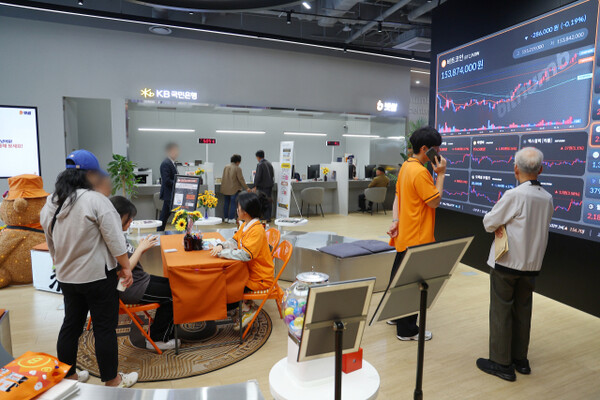
This year, the trading volume of stablecoins at domestic cryptocurrency exchanges in the first quarter approached 57 trillion won.
According to data submitted by Cha Gyu-geun of the Guk-jo Innovation Party to the National Assembly's Planning and Finance Committee on the 2nd, the trading volume of three types of dollar-denominated stablecoins, including USDT, USDC, and USDS, at the top 5 domestic cryptocurrency exchanges (Upbit, Bithumb, Korbit, Coinone, and Gopax) was tallied at a total of 56.9537 trillion won.
Among these, USDT, also known as Tether, accounted for the largest proportion at 47.3311 trillion won (83.1%), followed by USDC at 9.6186 trillion won (16.9%). USDS was limited to 41 billion won (0.01%). Minor stablecoins were not included in the statistics due to negligible trading volumes or frequent delisting.
Stablecoins are virtual assets aimed at maintaining a 1:1 value linked to the US dollar or physical gold. This is the first time the Bank of Korea has specifically disclosed the domestic stablecoin trading volume.
Since the implementation of the Virtual Asset User Protection Act in July last year, the Bank of Korea has exercised its right to request data from the top 5 cryptocurrency exchanges and has been accumulating stablecoin-related statistics. The stablecoin trading volume of these 5 exchanges increased more than threefold from 17.0598 trillion won in the third quarter of last year to 60.2902 trillion won in the fourth quarter, maintaining a similar level in the first quarter of this year.
Donald Trump's presidential campaign pledge to support the virtual asset industry in early November last year served as an inflection point for the surge in trading. By month, it rose from 5.2314 trillion won in September, 9.4318 trillion won in October, 19.1451 trillion won in November, to 31.7133 trillion won in December. This year, it gradually decreased to 24.7923 trillion won in January, 19.9968 trillion won in February, and 12.1647 trillion won in March.
The daily average trading volume increased from 174.4 billion won in September last year to 343 billion won in October, 638.2 billion won in November, and then exceeded 1 trillion won for the first time in December at 1.023 trillion won. This year, it decreased to 799.8 billion won in January, 714.2 billion won in February, and 392.4 billion won in March. This trend is proportional to the overall virtual asset market conditions.
According to the virtual asset information provider CoinGecko, the daily average virtual asset trading volume of the top 5 exchanges maintained around 20 billion dollars (approximately 2.758 trillion won) from July to October last year. After Trump's virtual asset-related campaign pledge, it surged to 10.6 billion dollars (about 14.613 trillion won) in November and 11.8 billion dollars (about 16.2675 trillion won) in December. It then showed a downward trend to 8 billion dollars (about 11.0290 trillion won) in January, 5.2 billion dollars (about 7.1685 trillion won) in February, and 3.8 billion dollars (about 5.2385 trillion won) in March.
The Bank of Korea is currently monitoring the trading trends of dollar-based stablecoins such as USDT, USDC, and USDS while actively expressing opinions on issuing won-based stablecoins. They are also focusing on 'Project Han River', an experiment to convert bank deposits into tokens linked to central bank-issued digital currency (CBDC) and use them as a payment method in real life.
Bank of Korea Governor Lee Chang-yong met with the CEOs of six major commercial banks on the 26th of last month, taking the opportunity of Timothy Adams, president of the International Institute of Finance (IIF), visiting Korea to discuss ways to revitalize the CBDC project. He plans to continue discussions on CBDC experiments and stablecoin issuance with bank presidents at the Korea Federation of Banks board meeting at the end of this month.
At a press conference on the 29th of last month, the governor stated, "Won-based stablecoins could significantly undermine the effectiveness of monetary policy if non-bank institutions arbitrarily issue them" and "Won-based stablecoins could be used as a means to circumvent capital regulations due to easy trading with dollar-based stablecoins, so issuance should start from the banking sector where supervision is possible."






